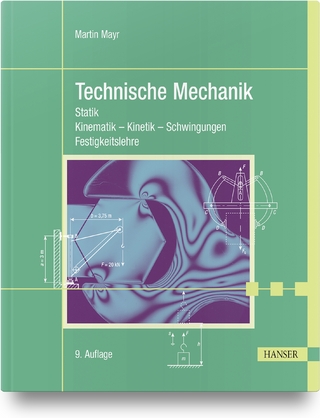
Classical Mechanics
Kluwer Academic Publishers (Verlag)
978-0-7102-0280-2 (ISBN)
1 Newton’s laws.- 1.1 Historical introduction.- 1.2 Kinematics and the use of vectors.- 1.3 Newton’s laws of motion.- 1.4 Galilean relativity.- 1.5 The formulation of Mach.- 2 Energy and momentum.- 2.1 Conservation laws.- 2.2 Kinetic energy and work.- 2.3 Conservative forces.- 2.4 Momentum and momentum conservation.- 2.5 Angular momentum.- 3 Dynamics of a single particle.- 3.1 One-dimensional motion.- 3.2 General solution of one-dimensional motion.- 3.3 Harmonic motion — small oscillations.- 3.4 Central forces.- 3.5 Qualitative features of motion under a central force.- 3.6 The Kepler problem.- 3.7 Kepler’s laws.- 4 Many-particle systems.- 4.1 Centre of mass.- 4.2 The two-body problem.- 4.3 Energy of a many-particle system.- 4.4 Angular momentum.- 4.5 Friction and dissipation.- 4.6 Scattering.- 4.7 Rutherford scattering.- 4.8 Rockets and variable-mass systems.- 5 Rigid bodies and non-inertial frames.- 5.1 Rigid bodies.- 5.2 Rotating vectors.- 5.3 The inertia tensor.- 5.4 The Euler equations for rigid-body motion.- 5.5 The symmetrical top.- 5.6 Stability of rotational motion.- 5.7 Particle in a rotating frame.- 6 Lagrangian and Hamiltonian mechanics.- 6.1 Principle of least action.- 6.2 Calculus of variations.- 6.3 Recovery of Newton’s laws.- 6.4 Symmetry and conservation laws.- 6.5 Hamilton’s equations.- 6.6 Charged particle in an electromagnetic field.- 6.7 Poisson brackets.- 6.8 Connections with quantum mechanics.- Appendix 1 Exercises.- Appendix 2 Answers to exercises.
| Erscheint lt. Verlag | 31.5.1984 |
|---|---|
| Reihe/Serie | Student Physics Series |
| Zusatzinfo | 1 Illustrations, black and white; VII, 117 p. 1 illus. |
| Verlagsort | Dordrecht |
| Sprache | englisch |
| Maße | 127 x 203 mm |
| Themenwelt | Geisteswissenschaften |
| Naturwissenschaften ► Physik / Astronomie ► Mechanik | |
| Sozialwissenschaften | |
| ISBN-10 | 0-7102-0280-6 / 0710202806 |
| ISBN-13 | 978-0-7102-0280-2 / 9780710202802 |
| Zustand | Neuware |
| Haben Sie eine Frage zum Produkt? |
aus dem Bereich


